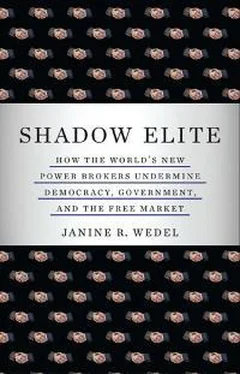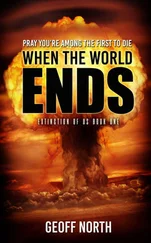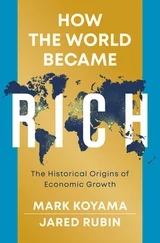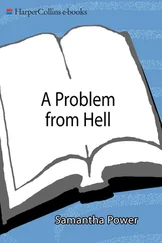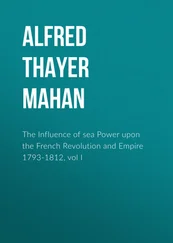“Stand[ing] for each other in defence of each other all the way” is but one reason the Neocon core, like other flex nets, is not quite an interest group, whose members have common interests but not necessarily shared interpersonal histories and activities. Standing for each other entails both the benefits of disciplined coherence and the costs of dissent; the cost of “unfriending” a fellow member of the core is likely to be high for all involved.
Conviction and Continuity
The Neocon core’s shared interpersonal histories and activities are also at the heart of the second feature of flex nets—their shared conviction and action . They are bound together by their common view of the world and their role in it. Like fervent adherents of religious or political-philosophical movements, members of the core have passionately pursued certain policy goals according to their own vision: first to ensure American strength vis-à-vis the Soviet Union, and, after the end of the Cold War, to transform the Middle East (and the world) via U.S. power. Those goals are part of an organized set of ideas that offer an ideal model for society—and can be summed up as an ideology. 19In that ideology, which is global in scope (and goes from general to specific, not the other way around), world events are interconnected. Fitting into philosopher Hannah Arendt’s hypothesis about “objective enemies,” the neoconservative ideology posits an absolute “objective enemy” that lacks specific content. Such enemies need not be suspected of actual wrongdoing. 20
How did this objective enemy come about? The thinking of neoconservatives about foreign policy was significantly shaped by their interpretation of World War II, America’s role in it, and the age of American preeminence that followed. Richard Perle put it thusly: “For those of us who are involved in foreign and defence policy today, my generation, the defining moment of our history was certainly the Holocaust. It was the destruction, the genocide of a whole people, and it was the failure to respond in a timely fashion to a threat that was clearly gathering. We don’t want that to happen again; when we have the ability to stop totalitarian regimes we should do so, because when we fail to do so, the results are catastrophic.” 21
The neoconservatives’ sense that constant vigilance is necessary to avert the next Nazi-type threat mandates that it is America’s right—even duty—to export organized violence in the service of U.S. interests. And as victory over fascism was achieved far from U.S. soil, without the trauma of war at home, so can America triumph in war abroad without endangering security at home. The post–World War II experience of American dominance, buoyed by notions of progress and democracy, further honed the view that America can, and should, refashion the world. Neoconservatives thus promote a defense strategy that prefers military intervention—indeed, preemption—and confrontation with enemies. Journalist Jim Lobe, a longtime student of the neoconservatives, sums up the role of the past in the neoconservatives’ present as follows: “The Nazi Holocaust . . . lies at the core of the neo-conservative worldview that has animated and given coherence to much of the Bush administration’s post-9/11 foreign policy that itself is changing the world.” 22Enmeshed with this worldview is an investment in defending the state of Israel, manifested in a commitment to a particular faction in Israeli politics and society: the right-wing Likud Party, as represented, say, by Benjamin Netanyahu. 23Likewise, certainty that their approach is correct: As an Israeli embassy official in Washington told his U.S. government liaison, “They [the Perle group] think they know what’s good for Israel better than we.” 24
Where once the first objective enemy for the neoconservatives was world communism, currently it is world terrorism. This enemy is, as Wolfowitz put it when he was deputy defense secretary, “a fascist totalitarianism not fundamentally different from the way it was in the last century—no more Godfearing than [the Nazis and communists] were.” The aim of this enemy, in the eyes of a senior fellow at the Center for Security Policy, a Neocon core-powered organization founded by Frank Gaffney, is: “Global domination and the destruction of the U.S.” It is, she writes, the “ultimate aim” of “jihadists” (encompassing Al Qaeda and Iran), who constitute a single “enemy.” Thus, as Perle concludes in his coauthored 2004 book, An End to Evil: How to Win the War on Terror , “For us, terrorism remains the great evil of our time, and the war against this evil, our generation’s great cause. . . . There is no middle way for Americans: it is victory or holocaust.” 25
The response to this all-or-nothing worldview is made clear in the writings of Perle and Feith, who single out bureaucracy and professional expertise for bruising. CIA and State Department operations and expertise are particularly derided. Railing against bureaucracy, civil service, and the law, Perle’s An End to Evil not only resembles a revolutionary tract but stands as an explicit endorsement of many of the trends in American governing that I laid out in Chapter 4. In a section titled “Organizing for Victory,” Perle and coauthor David Frum say we must “overhaul the institutions of our government to ready them for a new kind of war against a new kind of enemy.” The list of should-be-overhauled institutions begins with the FBI, the CIA, the armed forces, and especially the State Department, but doesn’t stop there. 26Decrying the “byzantine bureaucracy” at the Department of State, Perle and Frum suggest “eliminating the regional bureaus” to “streamline” government’s “ponderous bureaucracy” and recommend that “we should increase sharply the number of political appointees in the State Department and expand their role.” 27On this point, Feith is adamant, equating more political appointees with more democracy. “The cult of professionalism,” which holds that bureaucrats should run things because they are competent professionals, “is very anti-democratic,” Feith told me. “My view is that the American system is a good hybrid of professionalism and democracy. The people who are the democracy part are the political appointees.” 28The problem, as an observer close to the Neocon core emphasizes, is bureaucrats who fashion themselves “guardians of the national interest” and constitute a “new nomenklatura.” 29
In this view of government, centralizing and intensifying executive authority at the expense of checks and balances are necessary. With regard to paramilitary operations, for instance, Perle and Frum suggest “bring[ing] all these secret warriors into a single paramilitary structure ultimately answerable to the secretary of defense, the man responsible for running America’s wars.” They write that “even a nation of laws must understand the limits of legalism.” 30
What course of action follows from these views? Mobilization: a permanent state of emergency, with suspension of standard process and formal/legal procedures to manage the perceived crisis. Daniel Patrick Moynihan, the late senator from New York and onetime neoconservative, suggested that this kind of suspension of rules and processes was what motivated him to part ways with the movement in the 1980s: “They wished for a military posture approaching mobilisation; they would create or invent whatever crises were required to bring this about.” 31
It is this mentality of crisis that members of the Neocon core have brought to their engagement in foreign policy. In the endeavors they undertook beginning in the mid-1970s, they employed methods ranging from the creation of alternative intelligence; to might-be-authorized, might-not-be authorized diplomacy; to setting up pressure groups; to suspending standard government process, always contesting government information, assessments, and expertise. These methods—perfected over the years—would be deployed in full force in the Neocon core’s effort to take the United States to war in 2003.
Читать дальше
